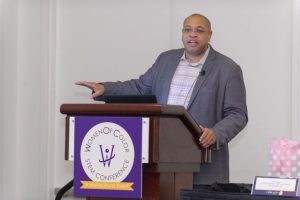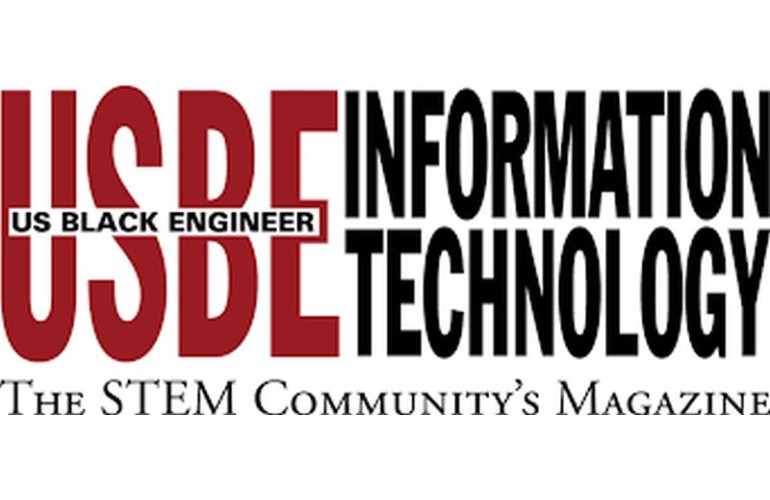 Subscribe
Subscribe- Login
-
/
Sign Up
- US Black Engineer
- >>
- Articles
- >>
- On Innovation
- >>
- The disruptive ideology around AI
 It’s no secret that the manual labor workforce has been impacted by artificial intelligence or AI.
It’s no secret that the manual labor workforce has been impacted by artificial intelligence or AI.
Robotics and machine automation are replacing people and disrupting many facets of the manual labor/employee workforce.
Intuitive machines are now doing the work of hundreds of employees and, over time, reviving the ROI for those organizations.
Machines don’t take vacations, sick days or lunch breaks, and they don’t work for specified periods of time. They are always on. That’s the disruptive ideology around AI.
This evolution has transpired over the last 20+ years in manufacturing, shipping supply chains, product manufacturing, and product-to-delivery markets.
For the first time in the history of the knowledge workforce’s conception, we now have AI looking and pointing towards the knowledge workforce.
Now, AI is being developed with the capability to think like humans. This is what we call machine learning, where the machine is trained to think, reason or process data similar to what humans have done.
Artificial Intelligence and the Knowledge Workforce
We are in the early stages of this phenomenon, also known as the “supervised machine learning phase” where much of the training occurs and is being driven by businesses and the data scientists who create algorithms that mimic the physical world.
Those algorithms are constantly being tuned to past historical data that we already know the answers to, so the machine can give us some indication that it is catching on to the process.
If you analyze past information to process the incoming data with the actual outcome that occurred, you can now “teach” a machine to learn the incoming data, derive the outcome and measure the accuracy.
This is how we understand the maturity of the machines running specific algorithms and platforms. The ideal goal is to achieve unsupervised machine learning.
In the unsupervised learning state, AI will no longer need to be trained; it will start to train itself. This is similar to how we humans perceive, reason, learn and take in data based on our senses, reasoning capabilities, and acquired knowledge.
I believe we are in a 10- to 15-year span of seeing unsupervised learning enter the market across every vertical possible: financial, retail, government, manufacturing, supply chain, etc.
As that process continues to evolve, there will be less need for people to do what will ultimately become automated work. That fact has been acknowledged by some. Yet, it has been pushed to the back by others, because we need people to disrupt people.
One part of the existing workforce will always be developing this technology, and they will continue to develop it for years and years. They’re not truly disruptive, because they are authors of the technology and will be needed to service, expand and continue to innovate the technology.
But then there is part of the workforce that is and will be disrupted by this technology.
Whatever their role, responsibility or task, there is the possibility that an algorithm will be created to replace their expertise. The question is, what do we do with all of these people? How will we manage society?
When you start to consider the introduction of AI, one has to look at what is necessary as an employee or a career professional today to make sure he is on the non-disruptive side of the curve.
What is needed today to be a part of the non-disruptive process, but also to profit from it and be able to take full advantage of it, and not be displaced by it?
Shift to lifelong learning mentality
In order to do that, an individual must shift to a lifelong learning mentality in addition to the traditional degree process, the matriculation of students going through higher education.
That could mean looking for more specialized, short-term, certificate-based educational achievements that help workers become more proficient in a particular area of interest based on certifications that can provide a faster insight process.
Instead of moving towards the typical four-year career pathway plan, professionals can be up and running in the workforce six months after graduating high school.
How can they do that?
One surefire way it can happen is through coding certification. For the first time, students are going to code schools and utilizing that training as a professional pathway. And because there is a huge deficit from a workforce necessity perspective in cybersecurity, language programming development, and data sciences, coding will definitely be a faster career pathway.
These are areas where we will see a spike in the promotion, marketing and propaganda driving more STEM-based awareness incentives.
If I am looking to avoid disruption from AI, I have to look at STEM as a knowledge workforce, no matter where or what particular role I play.
Whether it involves in marketing, sales or finance, STEM is going to be there as an opportunity to begin redesigning professional career paths to take advantage of the addressable number of upcoming opportunities that will undoubtedly involve STEM in some shape or form.
That won’t necessarily mean workers will have to be mathematicians or the best coders. What it will mean is that they will have to have more intimate knowledge of technology and how it can be used, so that it can spur innovative thought.
Take, for example, the clothing retail industry.
That may seem like the polar opposite of a STEM-focused career. But if I mentioned the use of geolocation data or the blending of brick-and-mortar omnichannel and digital experiences, then technology becomes the most important topic of conversation.
If I track someone on the phone and watch very closely what they’re searching for, and they happen to search for a jacket and walk past Macy’s, I can pop up a Macy’s coupon for a jacket of that type or similar to drive an impulse reaction on their part to take a divergence towards Macy’s to get that jacket.
Or, I can pop up an e-commerce link to say, “buy the jacket online, and we’ll deliver it to you.”
Just like that, retail becomes a STEM and technology market and less of a face-to-face, people-to-people intensive marketing. If I’m in retail, I should begin to look at technology and begin to understand how to leverage and adopt it to be more relevant in my professional area.
Similarly, as a cashier at the traditional point of sale, I can now look at the opportunities with mobile applications or processes to look at the historical perspectives of time-based or time-series data that analyzes optimal shopping times. I can begin to contribute to that discussion and start providing insight without ever understanding how technical solutions are going to work.
Before technology can be implemented, processes have to be understood.
To be a part of the innovation of AI, as opposed to being disrupted by it, I have to look at how, when and why I do things within my organization.
That’s the future of knowledge workers – not to be intimidated by AI, but to continue looking at insights to create innovative ways of driving process automation and workforce efficiency.
Workforce disruption has been a regular occurrence for hundreds of years. Every time disruption enters a market, new markets are always created. Such is the case with this digital age and the introduction of artificial intelligence. AI is nothing to fear; however, it should be a catalyst in considering opportunities for the knowledge workforce to begin looking at what markets are going to be created as a result of AI entering the workforce.
By putting eyes and ears on those opportunities, workers will be able to take advantage of those market opportunities and forge their own paths into the new digital marketplace.


